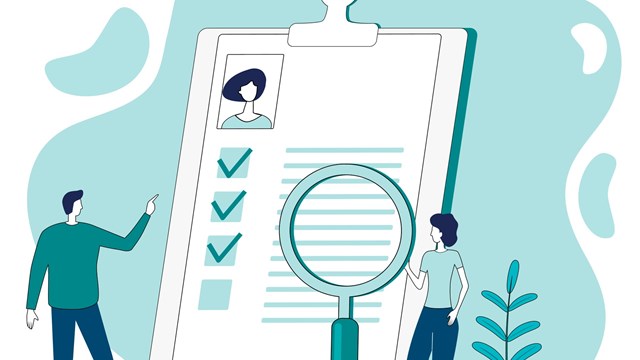
Northeasterners are a tough breed, but even they have to deal with dark days and nights—and they need an action plan in case of a blackout. This was evidenced by the blackout of 2003. In August of that year, a series of power failures overloaded the grid distributing electricity to the entire Northeastern United States, tripping circuit breakers at generating stations all the way to Canada, and triggering the largest blackout in the United States history. New York City logged 80,000 emergency calls during the episode—more than double the average but New Jersey was not spared, either. Most of Hudson, Morris, Essex, Union, Passaic, and Bergen counties were affected, including densely populated urban centers Paterson and Newark.
Though power was restored to much of the affected area within a day or so, millions of dollars in losses and damages were incurred, and serious questions arose about the state of the power grid serving this part of the country. Toll collection on the Jersey Turnpike was even suspended until power started being restored the day following the blackout.
Fast-forward to Halloween 2012, and the catastrophic arrival of Hurricane Sandy, which knocked out electricity and water for millions of buildings and homes up and down the coast. More than 23,000 people sought refuge in temporary shelters, and more than 8 ½ million people lost power. Sandy is estimated to have done some $30 billion in damage in New Jersey alone; nearly 350,000 homes were damaged or destroyed, and 37 people lost their lives. Over 2 million homes lost power during the storm, and while power to many was restored within a few days, according to state and local utility figures, heading into the second week of November, there were still over a quarter-million New Jerseyans in the dark.
Getting Help
While events like the Northeast blackout and Hurricane Sandy may not be controllable, having a clear, well-rehearsed emergency management plan for power outages in one’s condo is something every board can and should do. Emergency management pros encourage building and HOA administrators to be proactive in educating their residents about their community's emergency plans, as well as encouraging them to implement individual action plans as well.
Because it's the nature of a blackout to be somewhat unpredictable, it's important for managers and boards to notify their building residents well ahead of time about what they should do. This should include letting people know that there will be a building representative in the lobby who will answer questions. Residents should also be aware of which areas of the building that should be avoided due to emergency operations or hazards during a blackout.
Governmental agencies are a great place to go for pre-planning tips and information, and emergency response professionals will come to your building or HOA to educate, advise and prepare long before the lights go out. The American Red Cross has long been known for helping those affected by crises such as fire or natural disaster, but the group also works to educate people how to be ready for emergencies before they happen. The group makes simple emergency-planning advice available online at www.redcross.org and www.redcross.org. The Federal Emergency Management Agency (FEMA) is another such resource, and can be found online at www.ready.gov and www.fema.gov/are-you-ready-guide.
The New Jersey Office of Emergency Management (NJOEM) also works with local, regional, state, and federal partners in case of emergencies, including power outages. “We are one of the rare states that the Office of Emergency Management falls under the state police,” says Capt. Stephen Jones, NJOEM spokesperson and director of communications for the New Jersey State Police Department in Trenton. “For most states it’s a separate office, but for New Jersey, the troopers man all the key positions and the superintendent of the state police serves a dual role as director of the Office of Emergency Management.” The NJOEM website (www.ready .nj.gov) is a rich resource for boards, managers, and residents alike—along with local police and fire departments.
Needful Things
As mentioned above, in addition to a community-wide blackout emergency plan, individual households in the building or HOA should also be prepared, says Peter Judge, public information officer with the emergency management office in Massachusetts. He suggests that everyone keep flashlights, bottled water and a portable radio with extra batteries in a close, easily accessible spot within their homes. “You can keep on top of the event, and find out whether it’s a localized outage—or whether it’s the Northeast blackout,” he says. Also, the radio will help people find a local cooling or warming shelter if necessary. Charging electronics becomes difficult in long-term blackout situations, but Judge says that solar powered or hand-cranked chargers can be used to charge phones and electronics—as well as car chargers.
The Red Cross advises unit owners to have an emergency kit or 'go bag' containing prescriptions, nonperishable food items, drinking water, cash, clothes and a few other necessities ready to roll in case the lights go out. There are other recommendations for putting together a blackout kit in Ready, a national PSA campaign launched by the Department of Homeland Security and FEMA in 2004, including putting plastic containers filled not-quite-full with water in the refrigerator and freezer to keep food cold until the power comes back on. According to the Edison Electric Institute (EEI), food should stay frozen for 36-48 hours in a fully loaded freezer with the door closed, while a half-full freezer will keep food frozen for 24 hours. Refrigerated items such as milk, meat, fish, eggs and spoilable leftovers should be moved into a cooler surrounded by ice as soon as possible after a power outage.
Special Needs
Those with disabilities need to be especially proactive, taking a close inventory of what they need on a daily basis to stay safe and healthy—such as diabetic supplies, hearing aid batteries, and necessary supplies for any service animals they have. Residents who use assistive technology will also need to have extra batteries on hand for those devices, or plan alternate ways to charge them in case of a major power outage.
Emergency planning pros also recommend that someone in the building—perhaps a staff or board member be put in charge of reporting the outage to the electrical company, so that the technicians can start working on the repair immediately. It’s easier to do this if the board has the pertinent contact information in their phones, rather than having to fish around for it in the dark. Most electrical companies and municipal utilities now have apps that allow anyone to report outages from their phones, and receive notification via their phones as soon as the juice is restored.
Homemade Juice
While a backup generator can ease the discomfort and inconvenience of a major power outage—particularly for those residents less able to evacuate, or who rely more heavily on support technology—not many communities can foot the cost of a generator, which can cost upwards of $1 million for one big enough to power a mid-rise building.
“If they cannot afford fixed generators, then they should buy at least one portable generator,” suggests Peter Grech, a resident manager and education director for the Superintendents’ Technical Association of New York in Manhattan. “This generator can be located by the front of the building, and can supply power to portable lights in the lobby by the front desk and outside the building.”
The generator can also be used to charge walkie-talkies as well as cellphones, Grech says. A second medium-sized portable generator can be used on the roof to supply lights connected by an extension cord for at least one stairwell. He also suggests that extra flashlights be kept at the front desk, along with rechargeable batteries for them. “Training for the staff would include portable generator use and hanging temporary lights using extension cords,” he adds.
Security and Frozen Peas
It's important to remember that in addition to dealing with the lights, buildings will also have to reckon with potential security issues during a blackout. Depending on the nature of the security system—and whether or not there are battery backups—entire buildings could find themselves without security should the electricity go down. “The reality is that a residence should think about the various ways that they are dependent on power, and plan accordingly,” says one security expert.
For example, if the building has a single doorman who is responsible for monitoring the cameras to the back and front entrance—or to multiple locations—then they might have to identify staff who would have to be in those locations physically should the electricity go out, because the cameras might not be working. “These are all things that they need to think about in advance, and communicate to the residents, so that they know that the building is taking these issues seriously,” says the pro.
Looters are also a possibility, but when massive blackouts occur, people tend to stick together and help each other out, however, says Paul Rudewick, CEO of Chicago-based Optimal Facility Management Solutions, LLC, an energy risk management and consulting firm. He resided in New York City on 55th Street and Broadway when the big blackout of 2003 occurred.
“The city is pretty respectful, and everyone comes together,” he says. “There was no chaos, no looting. It was a coordinated, respectful, ‘Let’s all work through this issue until the lights get back on.’ ”
His biggest issue had to do with his food. While it may have lasted a day or two in the fridge or freezer left untouched, Rudewick’s roommates had other ideas. They opened the freezer and peered inside, seeing what there was to eat. “After opening it, you let all the cold air out, and we had to toss everything from the freezer,” he says. “One thing that you may want to consider is keeping your freezer and fridge closed. It’s highly likely that your fridge and freezer are okay if you haven’t opened them.”
More Concerns
There are bigger issues than having food spoil during a blackout, however. One of the biggest is the elevator, especially in a high-rise.
After Hurricane Sandy occurred, FEMA recommended that all high-rise buildings containing elevators and conveyance system components see to it that those components are protected sufficiently in order to restore the elevator service as quickly as possible. This can be done by moving the elevator equipment such as the electrical controls and hydraulic pumps above the DFA. If it has to be located below, in the elevator pit, it needs to be protected using floor damage resistant components, FEMA recommended.
According to the EEI, another thing that residents need to remember to do is to turn off all their appliances except for a single lamp so that they know when power has been restored. This also reduces the likelihood of a circuit overload—and another outage —when power is restored to all appliances at once.
Electric companies typically make sure that power isn’t flowing through downed lines before restoring electrical service after a power outage to prevent injuries and fires, according to the EEI. Then, they usually repair transmission lines and distribution substations because these are the most important lines, as they carry power from generating plants to the large number of customers over wide communities.
The EEI goes on to say that after those lines return, the electric companies restore power to places like hospitals, police departments and fire departments. Finally, they restore service to the remainder of the communities beginning with large apartment buildings followed by single residences and small groups of customers. Once that's accomplished, Northeasterners will live to see the light of another day.
Danielle Braff is a freelance writer and a frequent contributor to The New Jersey Cooperator.






Leave a Comment